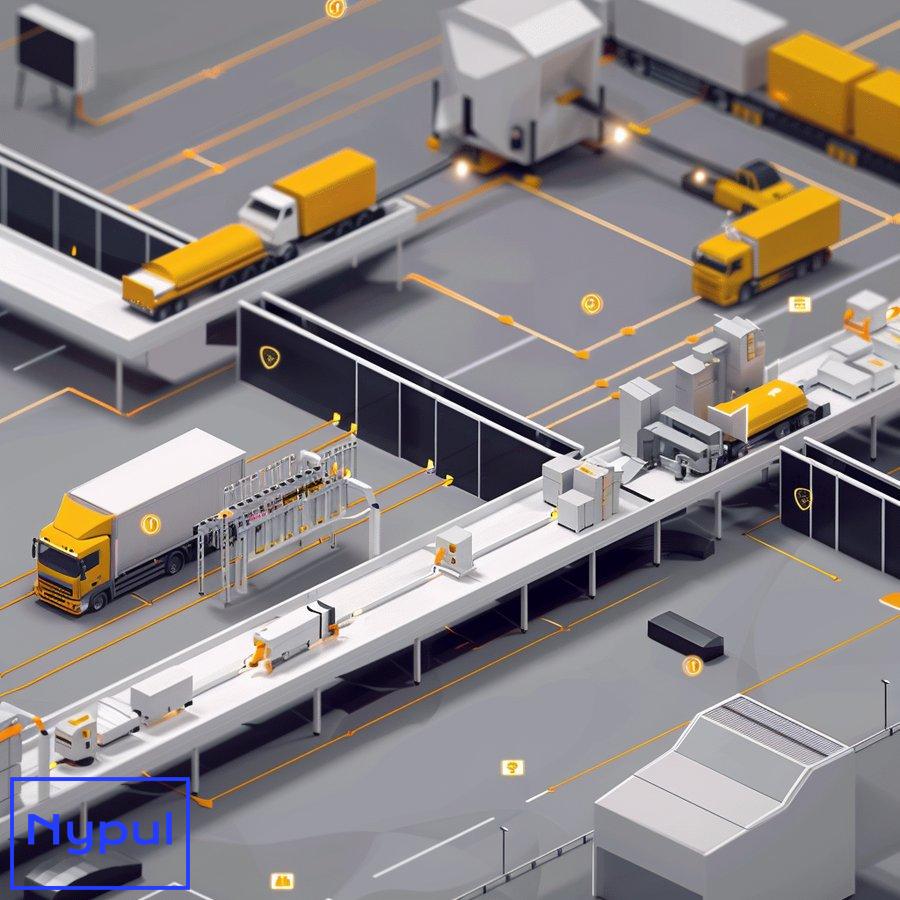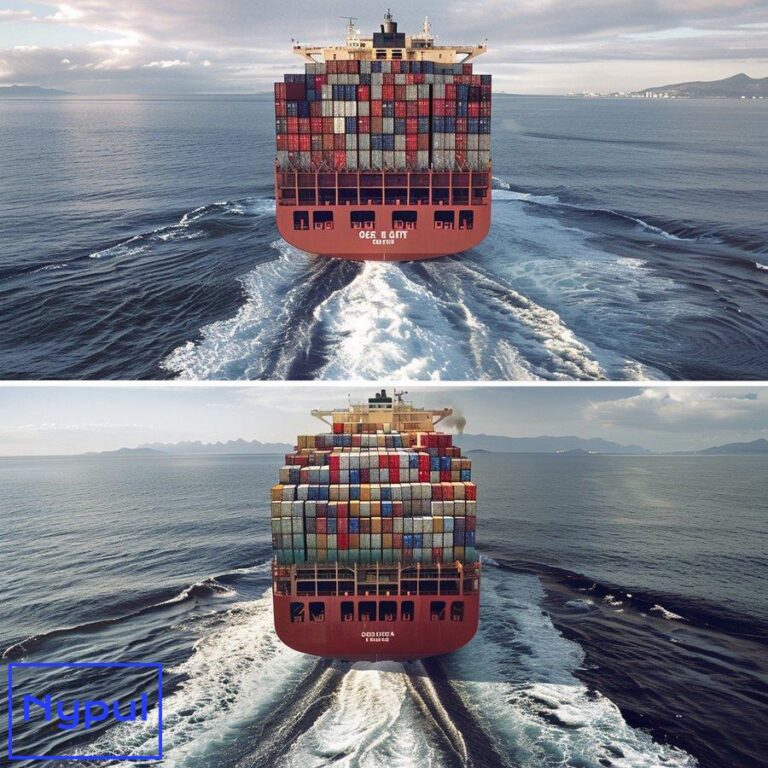Is Cross-Docking Profitable
How can cross-docking reduce operational costs?

Cross-docking is a logistics strategy that can significantly reduce operational costs for businesses across various industries. This approach minimizes storage time by transferring incoming shipments directly to outbound vehicles, bypassing long-term warehousing. The cost savings stem from several key areas:
Reduced warehousing expenses
Cross-docking eliminates or greatly reduces the need for warehouse space. This translates to lower costs for:
- Facility leasing or ownership
- Utilities and maintenance
- Warehouse equipment and technology
- Insurance and property taxes
For many companies, warehousing represents a major fixed cost. By implementing cross-docking, businesses can downsize their warehouse footprint or eliminate it entirely, freeing up capital for other investments.
Lower inventory carrying costs
Traditional warehousing often results in products sitting idle for extended periods. This ties up working capital and incurs ongoing inventory carrying costs. Cross-docking keeps products moving, reducing:
- Capital tied up in inventory
- Costs of obsolescence and spoilage
- Insurance expenses for stored goods
- Inventory taxes
The rapid turnover enabled by cross-docking improves cash flow and reduces financial strain from excess inventory.
Decreased labor costs
Cross-docking requires less manual handling of goods compared to traditional warehousing. This leads to labor savings through:
- Reduced picking and putaway activities
- Less need for inventory management personnel
- Fewer quality control and inspection steps
- Streamlined loading/unloading processes
While cross-docking still requires skilled labor, the overall labor hours and associated costs tend to be lower than in conventional warehouse operations.
Improved transportation efficiency
By consolidating shipments and optimizing load planning, cross-docking can reduce transportation costs:
- Fuller truckloads mean fewer trips
- Shorter transit times reduce fuel consumption
- Less idling time for drivers improves productivity
- Reduced need for local delivery routes
The ability to combine multiple smaller shipments into full truckloads is particularly beneficial for companies dealing with less-than-truckload (LTL) freight.
Lower packaging and handling costs
Cross-docking often involves moving entire pallets or shipping containers rather than individual items. This reduces costs related to:
- Repackaging products for storage
- Materials for internal packaging and protection
- Labor for unpacking and repacking goods
- Damage from excessive handling
By minimizing touch points, cross-docking helps preserve product integrity while reducing associated expenses.
To illustrate the potential cost savings, consider this comparison of operational costs for a traditional warehousing model versus a cross-docking approach:
| Cost Category | Traditional Warehousing | Cross-Docking | Potential Savings |
|---|---|---|---|
| Warehousing | $500,000/year | $100,000/year | 80% |
| Inventory Carrying | $250,000/year | $50,000/year | 80% |
| Labor | $400,000/year | $250,000/year | 37.5% |
| Transportation | $800,000/year | $700,000/year | 12.5% |
| Packaging/Handling | $150,000/year | $75,000/year | 50% |
| Total | $2,100,000/year | $1,175,000/year | 44% |
These figures are illustrative and will vary based on specific business circumstances. However, they demonstrate the significant potential for cost reduction through cross-docking implementation.
While the cost savings can be substantial, it’s important to note that cross-docking isn’t suitable for every business or product type. Success depends on factors such as:
- Predictable and steady product flow
- Compatible inbound and outbound schedules
- Products that don’t require extensive sorting or customization
- Robust information systems for coordination
When properly implemented, cross-docking can dramatically reduce operational costs, improving profitability and competitiveness in the marketplace.
What are the key financial benefits of implementing cross-docking?
Implementing cross-docking can yield substantial financial benefits for businesses, extending beyond mere cost reduction. These advantages can positively impact various aspects of a company’s financial performance:
Improved cash flow
Cross-docking accelerates the movement of goods through the supply chain, which has a direct positive effect on cash flow:
- Faster inventory turnover reduces the cash conversion cycle
- Reduced working capital tied up in inventory
- Quicker order fulfillment leads to faster customer payments
- Lower upfront investment in warehouse space and equipment
This improved cash flow provides businesses with greater financial flexibility and the ability to invest in growth opportunities.
Increased revenue potential
By streamlining the supply chain, cross-docking can enable businesses to capture additional revenue:
- Faster order fulfillment allows for higher sales volumes
- Improved product availability reduces lost sales opportunities
- Ability to handle seasonal peaks more efficiently
- Potential for expanding market reach without significant infrastructure investment
The agility provided by cross-docking can be particularly valuable in fast-moving consumer goods (FMCG) and retail sectors, where responsiveness to market demands is crucial.
Enhanced profitability
The combination of cost reduction and revenue growth potential can significantly boost profitability:
- Lower operational costs increase gross margins
- Improved inventory management reduces write-offs and markdowns
- More efficient use of assets improves return on investment (ROI)
- Ability to offer competitive pricing without sacrificing margins
For many businesses, the profitability improvements from cross-docking can be substantial, often outweighing the initial implementation costs.
Reduced capital expenditure
Cross-docking can allow businesses to grow without proportional increases in capital expenditure:
- Less need for warehouse expansion as volume grows
- Reduced investment in material handling equipment
- Lower spending on warehouse management systems
- Ability to enter new markets without building local distribution centers
This capital efficiency can improve overall financial metrics and make the business more attractive to investors.
Improved asset utilization
Cross-docking enables more efficient use of existing assets:
- Higher throughput per square foot of facility space
- Increased utilization of transportation assets
- Better use of labor resources
- Improved return on assets (ROA) ratio
By maximizing the productivity of existing resources, businesses can grow without proportional increases in asset base.
Risk mitigation
While not a direct financial benefit, cross-docking can help mitigate certain financial risks:
- Reduced exposure to inventory obsolescence
- Lower risk of damage to goods during storage
- Less vulnerability to fluctuations in warehousing costs
- Improved ability to adapt to market changes quickly
This risk reduction can lead to more stable financial performance and potentially lower insurance costs.
To illustrate the potential financial impact of cross-docking, consider this hypothetical example for a mid-sized retailer:
| Financial Metric | Before Cross-Docking | After Cross-Docking | Improvement |
|---|---|---|---|
| Annual Revenue | $50,000,000 | $55,000,000 | 10% |
| Cost of Goods Sold | $35,000,000 | $38,500,000 | – |
| Gross Margin | $15,000,000 | $16,500,000 | 10% |
| Operating Expenses | $12,000,000 | $11,000,000 | 8.3% |
| Operating Profit | $3,000,000 | $5,500,000 | 83.3% |
| Inventory Turnover | 6 times/year | 9 times/year | 50% |
| Days Sales Outstanding | 45 days | 40 days | 11.1% |
| Return on Assets | 12% | 18% | 50% |
This example demonstrates how cross-docking can impact various financial metrics positively. The actual results will vary based on the specific circumstances of each business, but it illustrates the potential for significant financial improvement.
While the financial benefits of cross-docking can be substantial, it’s crucial to conduct a thorough analysis before implementation. Factors to consider include:
- Current supply chain efficiency
- Product characteristics and demand patterns
- Required technology investments
- Potential disruptions during transition
For businesses with suitable products and supply chain characteristics, cross-docking can provide a powerful boost to financial performance, enhancing competitiveness and creating value for stakeholders.
Which industries benefit most from cross-docking?
Cross-docking offers significant advantages to various industries, but some sectors are particularly well-suited to leverage this logistics strategy. The industries that benefit most typically share characteristics such as high-volume shipments, time-sensitive products, or complex distribution networks. Let’s explore the key industries where cross-docking can provide substantial value:
Retail
The retail industry is perhaps the most prominent beneficiary of cross-docking:
- Fast-moving consumer goods (FMCG) benefit from rapid distribution
- Seasonal products can be quickly moved to stores to meet demand
- Reduced storage needs help manage limited retail space
- Improved inventory turnover enhances cash flow
Major retailers like Walmart have long used cross-docking to maintain competitive advantage through efficient supply chain management.
Automotive
The automotive industry’s just-in-time (JIT) manufacturing approach aligns well with cross-docking:
- Enables efficient delivery of components to assembly plants
- Reduces the need for large parts inventories
- Facilitates the handling of diverse components from multiple suppliers
- Supports lean manufacturing practices
Cross-docking helps automotive manufacturers maintain production efficiency while minimizing inventory costs.
Food and beverage
Perishable goods in the food and beverage industry benefit greatly from cross-docking:
- Reduces transit time, preserving freshness and quality
- Minimizes the need for temperature-controlled storage
- Enables rapid response to demand fluctuations
- Supports efficient handling of mixed-load deliveries to retailers
For products with short shelf lives, cross-docking can be the difference between profit and loss.
E-commerce
The rapid growth of e-commerce has made cross-docking increasingly valuable:
- Supports fast order fulfillment and same-day delivery
- Enables efficient handling of returns
- Facilitates the consolidation of orders from multiple vendors
- Allows for dynamic inventory allocation based on real-time demand
E-commerce giants like Amazon use cross-docking extensively to maintain their competitive edge in rapid delivery.
Pharmaceuticals
The pharmaceutical industry benefits from cross-docking due to its unique requirements:
- Ensures rapid distribution of time-sensitive medications
- Maintains strict temperature control throughout the supply chain
- Facilitates efficient handling of high-value, low-volume shipments
- Supports compliance with regulatory requirements for traceability
Cross-docking helps pharmaceutical companies balance the need for speed with stringent quality control measures.
Electronics
The fast-paced electronics industry leverages cross-docking to stay competitive:
- Reduces the risk of obsolescence for rapidly evolving products
- Enables quick market entry for new product launches
- Facilitates efficient handling of high-value items
- Supports the consolidation of components from global suppliers
Cross-docking helps electronics manufacturers and retailers respond quickly to market demands and technological changes.
Apparel and fashion
The fashion industry’s seasonal nature and trend-driven demand patterns make cross-docking particularly valuable:
- Enables rapid distribution of new collections
- Reduces the risk of unsold inventory due to changing trends
- Facilitates efficient handling of size and color variations
- Supports quick replenishment of popular items
Cross-docking helps fashion retailers maintain a fresh and relevant product mix in stores.
To illustrate the varying impact of cross-docking across industries, consider this comparison of key performance indicators (KPIs):
| Industry | Inventory Turnover Improvement | Lead Time Reduction | Cost Savings |
|---|---|---|---|
| Retail | 40-60% | 20-30% | 25-35% |
| Automotive | 30-50% | 15-25% | 20-30% |
| Food & Beverage | 50-70% | 30-40% | 30-40% |
| E-commerce | 60-80% | 40-50% | 35-45% |
| Pharmaceuticals | 20-40% | 10-20% | 15-25% |
| Electronics | 40-60% | 25-35% | 25-35% |
| Apparel & Fashion | 50-70% | 30-40% | 30-40% |
These figures are illustrative and can vary based on specific company circumstances and implementation effectiveness. However, they demonstrate the significant potential impact across different sectors.
While these industries stand to gain the most from cross-docking, the strategy can potentially benefit any business with:
- High-volume shipments
- Time-sensitive products
- Complex distribution networks
- Need for improved inventory management
- Desire to reduce warehousing costs
It’s important to note that successful implementation of cross-docking requires:
- Robust information systems for coordination
- Efficient transportation networks
- Skilled workforce for rapid sorting and handling
- Strong relationships with suppliers and carriers
For businesses in these industries, cross-docking can provide a significant competitive advantage by improving efficiency, reducing costs, and enhancing customer satisfaction through faster delivery times.
What challenges can affect cross-docking profitability?

While cross-docking offers numerous benefits, several challenges can impact its profitability. Understanding and addressing these challenges is crucial for businesses looking to implement or optimize their cross-docking operations. Let’s explore the key issues that can affect cross-docking profitability:
Coordination complexity
Effective cross-docking requires precise coordination between multiple parties:
- Synchronizing inbound and outbound shipments
- Managing relationships with numerous suppliers and carriers
- Aligning schedules across different time zones and regions
- Handling last-minute changes or disruptions
Poor coordination can lead to delays, inefficiencies, and increased costs, undermining the potential profitability of cross-docking.
Technology investment
Implementing cross-docking often requires significant technology investment:
- Advanced warehouse management systems (WMS)
- Real-time tracking and visibility tools
- Automated sorting and conveyor systems
- Integration with supplier and carrier systems
The upfront costs and ongoing maintenance of these technologies can impact short-term profitability, though they’re often necessary for long-term success.
Labor management
Cross-docking operations require skilled labor and effective management:
- Training staff in rapid sorting and handling techniques
- Managing peak periods and fluctuating workloads
- Ensuring accuracy in high-speed environments
- Addressing potential union concerns or labor disputes
Labor-related challenges can lead to increased costs or reduced efficiency, affecting overall profitability.
Quality control
Maintaining product quality in a fast-paced cross-docking environment can be challenging:
- Limited time for thorough inspections
- Potential for damage during rapid handling
- Difficulty in identifying and segregating defective items
- Ensuring proper handling of sensitive or fragile goods
Quality issues can lead to returns, customer dissatisfaction, and increased costs, impacting profitability.
Demand volatility
Cross-docking efficiency relies on predictable demand patterns:
- Seasonal fluctuations can strain resources
- Unexpected spikes in demand can lead to bottlenecks
- Overstocking or understocking due to forecast errors
- Difficulty in handling slow-moving or obsolete items
Inability to manage demand volatility can result in increased costs and reduced efficiency.
Facility design and location
The physical aspects of cross-docking facilities can impact profitability:
- Suboptimal layout leading to inefficient operations
- Inadequate dock space causing congestion
- Poor location increasing transportation costs
- Insufficient capacity to handle volume fluctuations
Addressing facility-related issues often requires significant capital investment, affecting short-term profitability.
Regulatory compliance
Cross-docking operations must adhere to various regulations:
- Transportation and safety regulations
- Environmental compliance
- Customs and international trade requirements
- Industry-specific regulations (e.g., for pharmaceuticals or food)
Compliance-related costs and potential penalties for non-compliance can impact profitability.
Supply chain disruptions
External factors can disrupt cross-docking operations:
- Natural disasters or severe weather events
- Political instability or trade disputes
- Pandemics or public health crises
- Cyber attacks or IT system failures
These disruptions can lead to delays, increased costs, and lost sales, affecting profitability.
To illustrate the potential impact of these challenges on cross-docking profitability, consider this hypothetical scenario for a retail company:
| Challenge | Potential Cost Impact | Probability | Risk Score |
|---|---|---|---|
| Coordination Errors | $500,000/year | 60% | 300 |
| Technology Failures | $750,000/year | 40% | 300 |
| Labor Issues | $400,000/year | 70% | 280 |
| Quality Problems | $600,000/year | 50% | 300 |
| Demand Volatility | $800,000/year | 80% | 640 |
| Facility Limitations | $300,000/year | 30% | 90 |
| Regulatory Non-Compliance | $1,000,000/year | 20% | 200 |
| Supply Chain Disruptions | $2,000,000/year | 10% | 200 |
This risk assessment matrix helps prioritize which challenges to address based on their potential impact and likelihood. In this example, demand volatility presents the highest risk to profitability, followed by coordination errors, technology failures, and quality problems.
To mitigate these challenges and maintain profitability, businesses can implement several strategies:
Invest in robust technology
- Implement advanced WMS and visibility tools
- Utilize predictive analytics for demand forecasting
- Adopt automation to reduce labor dependency and errors
Enhance coordination
- Establish clear communication protocols with partners
- Implement collaborative planning and forecasting
- Develop contingency plans for disruptions
Optimize labor management
- Provide comprehensive training programs
- Implement flexible staffing models
- Use performance metrics to incentivize efficiency
Improve quality control processes
- Implement rapid inspection techniques
- Use technology for automated quality checks
- Establish clear quality standards with suppliers
Develop agile operations
- Design flexible facility layouts
- Build redundancy into critical systems
- Cultivate a diverse supplier base
Ensure regulatory compliance
- Stay informed about relevant regulations
- Implement compliance management systems
- Conduct regular audits and training
By addressing these challenges proactively, businesses can maximize the profitability of their cross-docking operations and realize the full benefits of this efficient logistics strategy.
How do you calculate the ROI of cross-docking?
Calculating the Return on Investment (ROI) for cross-docking is crucial for businesses to determine whether the strategy is financially viable and to justify the investment to stakeholders. The ROI calculation for cross-docking involves comparing the costs of implementation and operation against the financial benefits gained. Here’s a comprehensive approach to calculating cross-docking ROI:
Step 1: Determine Total Investment
Calculate the total investment required for implementing cross-docking:
- Facility modifications or new construction costs
- Technology investments (WMS, automation systems, etc.)
- Equipment purchases (conveyors, forklifts, etc.)
- Training and change management expenses
- Consulting fees for implementation support
Sum up these costs to get the total investment figure.
Step 2: Estimate Annual Operating Costs
Determine the ongoing annual costs associated with cross-docking operations:
- Labor costs for cross-docking staff
- Maintenance and repair expenses for equipment
- Utility costs for the cross-docking facility
- Software licensing and IT support fees
- Insurance and compliance-related expenses
Step 3: Calculate Cost Savings
Identify and quantify the cost savings achieved through cross-docking:
- Reduction in warehousing costs
- Decrease in inventory carrying costs
- Lower transportation expenses
- Reduced labor costs compared to traditional warehousing
- Savings from improved inventory turnover
Step 4: Estimate Revenue Improvements
Determine any increases in revenue attributable to cross-docking:
- Additional sales from improved product availability
- Increased market share due to faster delivery times
- New business opportunities enabled by improved logistics capabilities
Step 5: Calculate Net Annual Benefit
Subtract the annual operating costs (Step 2) from the sum of cost savings (Step 3) and revenue improvements (Step 4) to determine the net annual benefit.
Step 6: Determine Payback Period
Divide the total investment (Step 1) by the net annual benefit to calculate the payback period in years.
Step 7: Calculate ROI
Use the following formula to calculate ROI:
ROI = (Net Annual Benefit × Number of Years – Total Investment) / Total Investment × 100%
Choose a timeframe for the ROI calculation, typically 3-5 years for logistics projects.
Here’s an example calculation using hypothetical figures:
| Category | Amount |
|---|---|
| Total Investment | $2,000,000 |
| Annual Operating Costs | $500,000 |
| Annual Cost Savings | $1,200,000 |
| Annual Revenue Improvement | $800,000 |
| Net Annual Benefit | $1,500,000 |
| Payback Period | 1.33 years |
| ROI (3-year period) | 125% |
In this example, the ROI calculation would be:
ROI = ($1,500,000 × 3 – $2,000,000) / $2,000,000 × 100% = 125%
This indicates a strong positive return on investment over a three-year period.
Additional Considerations
When calculating ROI for cross-docking, consider these factors:
Time value of money
For more accurate long-term projections, use discounted cash flow analysis to account for the time value of money.
Sensitivity analysis
Perform calculations with different scenarios (best case, worst case, most likely) to understand the range of potential outcomes.
Intangible benefits
Some benefits of cross-docking may be difficult to quantify but should be noted:
- Improved customer satisfaction
- Enhanced supply chain visibility
- Increased operational flexibility
- Reduced environmental impact
Opportunity costs
Consider the potential returns if the investment were made in alternative projects or strategies.
Risk factors
Assess the potential impact of risks on the ROI:
- Market changes affecting demand
- Technology obsolescence
- Regulatory changes
- Supply chain disruptions
To ensure a comprehensive ROI analysis, use this checklist:
ROI Calculation Checklist
- All relevant investment costs included
- Ongoing operating costs accurately estimated
- All potential cost savings identified and quantified
- Revenue improvements realistically projected
- Appropriate timeframe selected for ROI calculation
- Sensitivity analysis performed
- Intangible benefits noted
- Opportunity costs considered
- Risk factors assessed and incorporated
By following this structured approach and considering all relevant factors, businesses can accurately calculate the ROI of cross-docking implementation. This analysis not only helps in decision-making but also provides a basis for setting performance targets and evaluating the success of the cross-docking strategy over time.
What factors should be considered when deciding to implement cross-docking?
Implementing cross-docking is a significant decision that can greatly impact a company’s supply chain efficiency and overall business performance. To make an informed decision, several key factors must be carefully considered. These factors will help determine whether cross-docking is a suitable strategy for your specific business context.
Supply chain characteristics

The nature of your supply chain plays a crucial role in the suitability of cross-docking:
- Product flow consistency: Cross-docking works best with steady, predictable product flows.
- Supply chain visibility: Robust tracking and information systems are essential.
- Supplier reliability: Consistent on-time deliveries from suppliers are crucial.
- Distribution network structure: The geographical spread of suppliers and customers affects feasibility.
Assess your current supply chain structure and capabilities to determine if they align with cross-docking requirements.
Product characteristics
Not all products are suitable for cross-docking. Consider:
- Product shelf life: Perishable goods often benefit most from cross-docking.
- Demand predictability: Products with stable demand patterns are ideal.
- Product value: High-value items may justify the investment in cross-docking.
- Product variety: A large number of SKUs can complicate cross-docking operations.
- Physical characteristics: Size, weight, and fragility affect handling requirements.
Evaluate your product mix to determine which items, if any, are well-suited for cross-docking.
Operational readiness
Cross-docking requires specific operational capabilities:
- Technology infrastructure: Advanced WMS and real-time tracking systems are necessary.
- Staff skills: Employees need training in cross-docking processes and technologies.
- Facility suitability: Existing facilities may need modification or new facilities may be required.
- Process standardization: Consistent, well-documented processes are essential.
Assess your current operational capabilities and the investment required to achieve cross-docking readiness.
Financial considerations
The financial impact of cross-docking implementation is crucial:
- Implementation costs: Consider facility modifications, technology investments, and training expenses.
- Potential savings: Estimate reductions in inventory, warehousing, and transportation costs.
- Cash flow impact: Evaluate how cross-docking will affect working capital requirements.
- ROI timeline: Determine how long it will take to recoup the initial investment.
Conduct a thorough financial analysis, including ROI calculations, to justify the investment.
Customer requirements
Cross-docking must align with customer needs and expectations:
- Delivery speed: Determine if customers require faster delivery times.
- Order frequency: High-frequency, smaller orders may benefit from cross-docking.
- Customization needs: Products requiring significant customization may not be suitable.
- Service level agreements: Ensure cross-docking can meet or exceed existing SLAs.
Survey your customers or analyze order data to understand how cross-docking might impact customer satisfaction.
Competitive landscape
Consider how cross-docking might affect your competitive position:
- Industry standards: Determine if competitors are using cross-docking successfully.
- Market differentiation: Assess whether cross-docking could provide a competitive advantage.
- Adaptability: Consider how cross-docking might improve your ability to respond to market changes.
Analyze your industry and competitors to understand the strategic implications of cross-docking.
Regulatory environment
Regulatory factors can impact the feasibility of cross-docking:
- Industry-specific regulations: Some sectors have strict rules on product handling and storage.
- Environmental regulations: Cross-docking may have implications for carbon emissions and sustainability goals.
- Labor laws: Consider how cross-docking might affect workforce management and compliance.
Review relevant regulations to ensure cross-docking aligns with compliance requirements.
Partner capabilities
Cross-docking success often depends on the capabilities of supply chain partners:
- Supplier readiness: Assess if suppliers can meet the scheduling and labeling requirements of cross-docking.
- Carrier capabilities: Determine if transportation providers can support cross-docking operations.
- Technology compatibility: Ensure partner systems can integrate with your cross-docking technology.
Evaluate your key partners’ abilities to support a cross-docking strategy.
To help prioritize these factors, consider using a decision matrix:
| Factor | Weight | Score (1-5) | Weighted Score |
|---|---|---|---|
| Supply Chain Characteristics | 0.20 | 4 | 0.80 |
| Product Characteristics | 0.15 | 3 | 0.45 |
| Operational Readiness | 0.15 | 2 | 0.30 |
| Financial Considerations | 0.20 | 4 | 0.80 |
| Customer Requirements | 0.10 | 5 | 0.50 |
| Competitive Landscape | 0.05 | 3 | 0.15 |
| Regulatory Environment | 0.05 | 4 | 0.20 |
| Partner Capabilities | 0.10 | 3 | 0.30 |
| Total | 1.00 | – | 3.50 |
In this example, a total score above 3.0 might indicate that cross-docking is worth pursuing, while a lower score suggests more preparation may be needed.
Implementation readiness checklist
To summarize your readiness for cross-docking, use this checklist:
- Supply chain visibility and control are sufficient
- Product mix includes items suitable for cross-docking
- Operational capabilities meet cross-docking requirements
- Financial analysis shows positive ROI within acceptable timeframe
- Customer needs align with cross-docking benefits
- Cross-docking provides strategic advantage in the market
- Regulatory compliance can be maintained with cross-docking
- Key partners can support cross-docking operations
By thoroughly evaluating these factors, businesses can make an informed decision about whether to implement cross-docking. This comprehensive approach helps ensure that the strategy aligns with overall business goals and has the best chance of success.
How can technology optimize cross-docking operations?
Technology plays a pivotal role in optimizing cross-docking operations, enabling businesses to achieve higher efficiency, accuracy, and visibility throughout the process. By leveraging various technological solutions, companies can overcome many of the challenges associated with cross-docking and maximize its benefits. Let’s explore how different technologies can optimize cross-docking operations:
Warehouse Management Systems (WMS)

A robust WMS is the backbone of efficient cross-docking:
- Real-time inventory tracking and management
- Automated scheduling of inbound and outbound shipments
- Optimized dock door assignments
- Efficient labor allocation based on workload
- Performance analytics and reporting
Advanced WMS solutions specifically designed for cross-docking can significantly improve operational efficiency and reduce errors.
Transportation Management Systems (TMS)
TMS integration enhances the coordination between cross-docking and transportation:
- Optimized route planning and load consolidation
- Real-time tracking of inbound and outbound shipments
- Carrier performance management
- Freight cost optimization
- Automated appointment scheduling for carriers
By synchronizing cross-docking activities with transportation, TMS helps reduce wait times and improve overall supply chain efficiency.
Radio Frequency Identification (RFID)
RFID technology enhances tracking and identification in cross-docking:
- Automated product identification without line-of-sight scanning
- Real-time inventory visibility as products move through the facility
- Reduced manual scanning, increasing speed and accuracy
- Enhanced security and loss prevention
- Improved data collection for analytics
RFID can significantly speed up the cross-docking process while reducing errors and labor costs.
Automated Sortation Systems
Automation in sorting can greatly enhance cross-docking efficiency:
- High-speed conveyor systems for rapid product movement
- Automated scanners for product identification and routing
- Robotic sorting arms for precise product handling
- Tilt-tray or cross-belt sorters for diverse product types
- Integration with WMS for optimized sorting logic
These systems can handle large volumes of products quickly and accurately, reducing labor requirements and minimizing errors.
Internet of Things (IoT) sensors
IoT devices provide valuable data for cross-docking optimization:
- Environmental monitoring (temperature, humidity) for sensitive products
- Equipment performance tracking for predictive maintenance
- Occupancy sensors for space utilization optimization
- Energy consumption monitoring for sustainability initiatives
- Safety sensors for improved workplace safety
IoT data can be integrated with analytics platforms to provide insights for continuous improvement.
Artificial Intelligence (AI) and Machine Learning (ML)
AI and ML can enhance decision-making in cross-docking operations:
- Predictive analytics for demand forecasting
- Dynamic optimization of dock door assignments
- Anomaly detection for identifying potential issues
- Automated decision-making for exception handling
- Continuous process optimization based on historical data
These technologies can help cross-docking operations become more proactive and adaptive to changing conditions.
Mobile devices and applications
Mobile technology empowers workers and improves flexibility:
- Handheld scanners for quick and accurate data entry
- Tablet-based dashboards for supervisors to monitor operations
- Smartphone apps for real-time communication and task management
- Wearable devices for hands-free operation in some tasks
- GPS-enabled devices for precise indoor location tracking
Mobile solutions enhance worker productivity and enable real-time decision-making on the floor.
Blockchain
While still emerging in logistics, blockchain can offer benefits to cross-docking:
- Enhanced traceability and chain of custody documentation
- Improved security and transparency in multi-party transactions
- Smart contracts for automated execution of business rules
- Streamlined customs and compliance documentation
- Potential for tokenization of physical assets in transit
Blockchain can help build trust and efficiency in complex cross-docking networks involving multiple partners.
Data Analytics and Business Intelligence (BI)
Advanced analytics drive continuous improvement in cross-docking:
- Performance benchmarking and KPI tracking
- Identification of bottlenecks and inefficiencies
- Scenario modeling for capacity planning
- Cost analysis and optimization
- Trend analysis for long-term strategic planning
BI tools can transform raw data into actionable insights for optimizing cross-docking operations.
To illustrate the potential impact of technology on cross-docking performance, consider this comparison:
| Performance Metric | Without Advanced Tech | With Advanced Tech | Improvement |
|---|---|---|---|
| Processing Time | 120 minutes/truck | 60 minutes/truck | 50% |
| Error Rate | 2% | 0.5% | 75% |
| Labor Productivity | 100 units/hour/person | 150 units/hour/person | 50% |
| Space Utilization | 70% | 85% | 21% |
| Inventory Accuracy | 95% | 99.5% | 4.7% |
| On-Time Shipments | 90% | 98% | 8.9% |
These figures are illustrative and can vary based on specific implementations, but they demonstrate the significant potential for improvement through technology adoption.
Implementation considerations
When implementing technology solutions for cross-docking optimization, consider:
- Integration capabilities with existing systems
- Scalability to accommodate future growth
— Training requirements for staff - Total cost of ownership, including maintenance and upgrades
- Vendor support and reliability
- Data security and compliance features
Technology implementation roadmap
To successfully leverage technology for cross-docking optimization, follow this roadmap:
- Assess current technological capabilities and gaps
- Define specific operational goals and KPIs
- Prioritize technology investments based on potential impact and feasibility
- Develop a phased implementation plan
- Pilot new technologies in controlled environments
- Measure results and adjust implementation as needed
- Provide comprehensive training for all users
- Continuously monitor performance and seek opportunities for further optimization
By strategically implementing and integrating these technologies, businesses can significantly enhance their cross-docking operations. The result is a more efficient, accurate, and responsive supply chain that can adapt to changing market demands and maintain a competitive edge in the fast-paced world of logistics.






